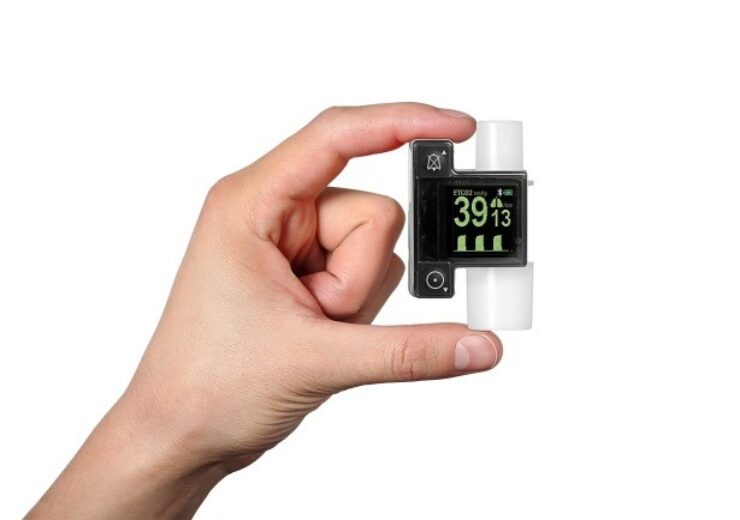EMMA offers capnography with accurate EtCO2 and respiration rate readings along with continuous EtCO2 waveforms displayed within 15 seconds

Masimo EMMA Portable Capnograph device. (Credit: Business Wire.)
Masimo said that the results from a clinical study showed that the company’s EMMA Portable Capnograph is effective for monitoring mechanically ventilated preterm infants (neonates).
The study was conducted at the Osaka Women’s and Children’s Hospital in Japan and was published in the European Journal of Paediatrics.
EMMA offers capnography with accurate EtCO2 and respiration rate measurements along with continuous EtCO2 waveforms for patients of all ages, within 15 seconds.
With a compact, easily portable design the device does not require timely calibration and minimal warm-up time, said the medical technology company.
Masimo claimed that the researchers selected its EMMA device not only for its portability but its capability to deliver a dead space as small as 1mL.
Maintaining optimum partial pressure of arterial carbon dioxide (PaCO2) in preterm infants is important, especially during mechanical ventilation in the neonatal intensive care unit (NICU).
In the study, researchers assessed the noninvasively monitoring end-tidal carbon dioxide (EtCO2) with EMMA in maintaining levels of neonatal PaCO2.
It enrolled 40 infants who need intubation in the delivery room (EMMA group), whose PaCO2 value was compared with that of 43 infants who did not undergo monitoring (control group).
The study determined that the optimum level of PaCO2 was 35-60mmHg, as measured using a blood gas analyser.
In the study, the proportion of infants with optimum PaCO2 were in greater number in the EMMA group, compared to that in the control group.
The researchers concluded that EMMA facilitated the maintenance of proper PaCO2 levels for mechanically ventilated preterm infants in the delivery room.
Furthermore, the study collected the intervention data and is the first to show the feasibility of using a portable capnometer during the resuscitation of intubated preterm infants.
